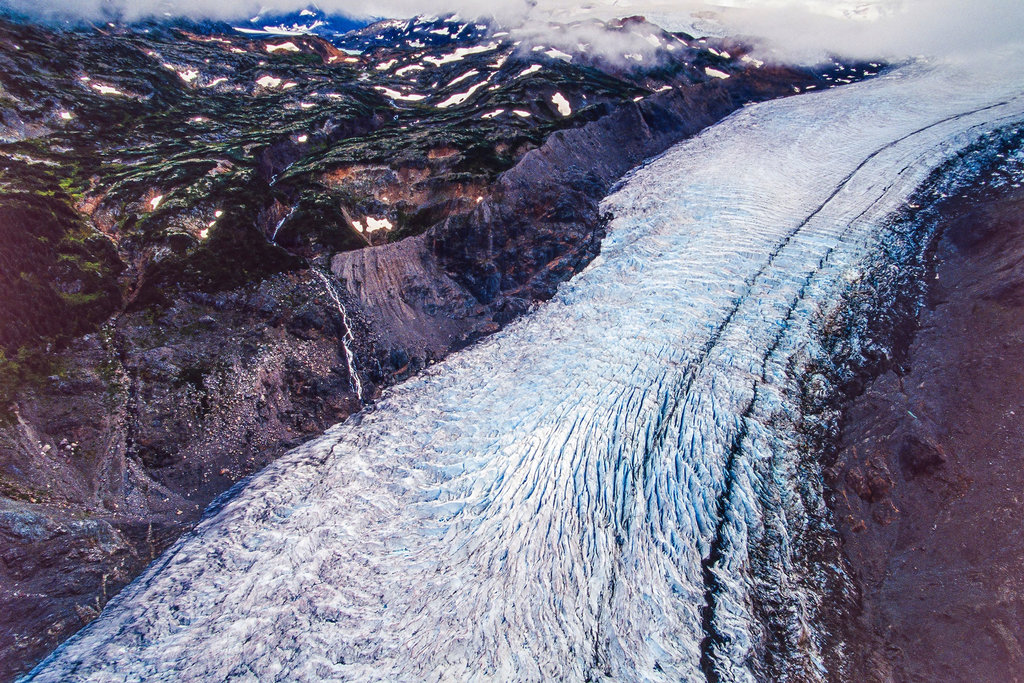Feature
Clean energy and critical minerals: inside mining in British Columbia
British Columbia spent about $550.8m in mineral exploration spending in just 2022, the highest spending recorded in the country. Smruthi Nadig reports.

Britannia Mine Museum in British Columbia. Credit: EB Adventure Photography via Shutterstock
Minerals remain essential components in the rapid transition towards cleaner energy, with mined commodities providing the materials for everything from wind turbines and electricity networks to electric vehicles.
The International Institute for Environment and Development (IIED) published a report that said that many countries give investors exploration licenses and exclusive rights without the safeguarding applied to full-scale mine development. These included environmental and social impact assessments or free, prior and informed consent, raising questions about both the environmental and social sustainability of many such practices.
Yet only some countries manufacture and produce minerals such as lithium, cobalt and some rare elements, with the world’s top three producers accounting for over 75% of global supplies. According to the International Energy Agency (IEA), the quality of available deposits has steadily declined over the decades as mining companies exploit the most accessible mineral resources, as these are the easiest and least expensive deposits to access, which has driven a sharp decline in the number of easily-accessible deposits remaining, even though there remains an abundance of total resources available.

Knipple Glacier in British Columbia. Credit: Russ Heinl via Shutterstock
As a result, mining companies are eager to explore for minerals in increasingly remote areas, and are driven to secure favourable licences and concessions from governments to make up for the losses involved in mining in such remote areas, and from such depleted deposits.
This phenomenon is particularly apparent in the Canadian state of British Columbia, where a rich history of mining has pushed companies to continue their work, despite declining ore grades and general profitability. Canada leads in potash production and ranks among the top five global producers of diamonds, gemstones and platinum group metals, but it remains to be seen how mining hotspots such as British Columbia will manage their operations in the long-term.
Exploration expenditure
David Eby, Premier of British Columbia, said during a conference that the value of the state’s mining sector in 2022 reached up to $13.5bn, the highest ever recorded, and a $3.1bn increase since 2021, making clear the fact that interest in mining in British Columbia is unlikely to go anywhere.
Indeed, mineral explorers in British Columbia had the highest spending recorded among Canadian states in 2022, around $550.8m, Eby announced on 23 January. A decade ago, this spending was around $506.6m, showing a steady increase in the state’s exploration budget. According to Statista, Canada’s year-on-year mining exploration spending budget increased by $800.5m in 2021. The next highest budget increase was reported in Australia, with a $531.3m increase, and the US, with $345.2m, establishing Canada as a world leader in mining investment.
Josie Osborne, minister of energy, mines and low-carbon innovation in British Columbia, said: “British Columbia’s mineral exploration sector is a foundational part of our economy, helping create family-supporting jobs for thousands throughout the province.
Mineral exploration leads to new mines, new mining investment, new mining jobs and the materials we need to build a future powered by clean-energy technology.
“Mineral exploration leads to new mines, new mining investment, new mining jobs and the materials we need to build a future powered by clean-energy technology.”
Higher commodity prices have also given some mining companies the cash flow to increase their advanced exploration activities and introduce digital technologies for faster and more efficient discovery.
Gordon Clark, director of the British Columbia Mineral Development Office, estimated that coal prices have increased between 2021 and the present day, and the latest figured show fluctuating, but high, coal prices. Last year the price of coal reached up to $670 per tonne and remained close to $300 per tonne as of last December.
Deep reserves, growing demand
Much of British Columbia’s mineral productivity is driven by growing demand for many of the minerals required for the clean energy transition. Global copper demand, for instance, is set to increase by 4.7 million tonnes by 2030, according to Teck Resources.
Jonathan Price, CEO of Teck, said that: “To put that into perspective, Teck’s Highland Valley Copper mine here in British Columbia is Canada’s largest copper mine. [An increase of] 4.7 million tonnes would be the equivalent of building another 35 Highland Valley Copper mines in just seven years.”
Mineral demand prospects under changing technologies and policy assumptions also examine the need for mineral investments. According to the IEA report, the supply of critical minerals must pick up over the next few decades in order to meet the world’s climate goals. It said that this created potential energy security concerns that the governments must immediately address.
Fatih Birol, Executive Director of the IEA, said: “Left unaddressed, these potential vulnerabilities could make global progress towards a clean energy future slower and more costly and hamper international efforts to tackle climate change.
This is what energy security looks like in the 21st century, and the IEA is fully committed to helping governments ensure that these hazards don’t derail the global drive to accelerate energy transitions.
“This is what energy security looks like in the 21st century, and the IEA is fully committed to helping governments ensure that these hazards don’t derail the global drive to accelerate energy transitions.”
However, shifting mineral demand can also bring unexpected challenges, such as new safety concerns. Canada’s metal and diamond mining effluent regulations have established concentration limits for some “deleterious substances” like arsenic, copper and zinc. The IEA said that such mining regulations require the mine operator to monitor the environmental effects of effluent deposits at each final discharge point, and British Columbian regulations require study results to be submitted to Canada’s Minister of the Environment.
Ultimately, this creates tension between miners, who are eager to explore for new mineral deposits now as demand changes, and regulators who insist on licencing and permitting taking place slowly to protect people. With this in mind, Eby has announced plans to speed up the state’s licencing process, saying: “Our province [BC] has had a slow, complicated permitting process system for decades. It bogged down our province’s growth. We announced two weeks ago a new major investment in addressing permitting in our province.
“New staff are coming on to expedite permits through the approvals process, and staff to assist us in reworking our permit system, so it’s more efficient and faster.”
Achieving climate goals
According to Reuters, many people in Canada have also transitioned towards hybrid or electrically-powered vehicles. The news agency reported that one in every 20 new cars on Canadian roads was powered by battery, plugged-in hybrid, or hydrogen fuel cells, a transition which will lower the country’s total carbon footprint, but drive demand for minerals involved in such constructs even higher.
According to the IEA the world’s mineral demand will increase in the coming decades, with clean energy technologies alone driving a doubling, or even quadrupling, of demand for mined commodities. Similarly, Reuters reported that the World Bank predicts an increase in mineral production by 500 times by 2050 to meet the ever-growing demands.
The World Bank predicts an increase in mineral production by 500 times by 2050 to meet the ever-growing demands.
To meet such climate targets, programmes like IIED’s ‘Align’ offer technical advice to governments, and civil and local societies to strengthen their governance of land-based investments. Research shows that a large amount of mining takes place in and around protected areas, creating challenges between those who want to exploit the reserves for national interest, and those who would protect those areas for local interest.
Tensions like this are just one of many within the Canadian mining industry, which has become something of a template for the global sector; the green transition requires rare minerals, but expanding the world’s mining sector contradicts the most ambitious climate goals.